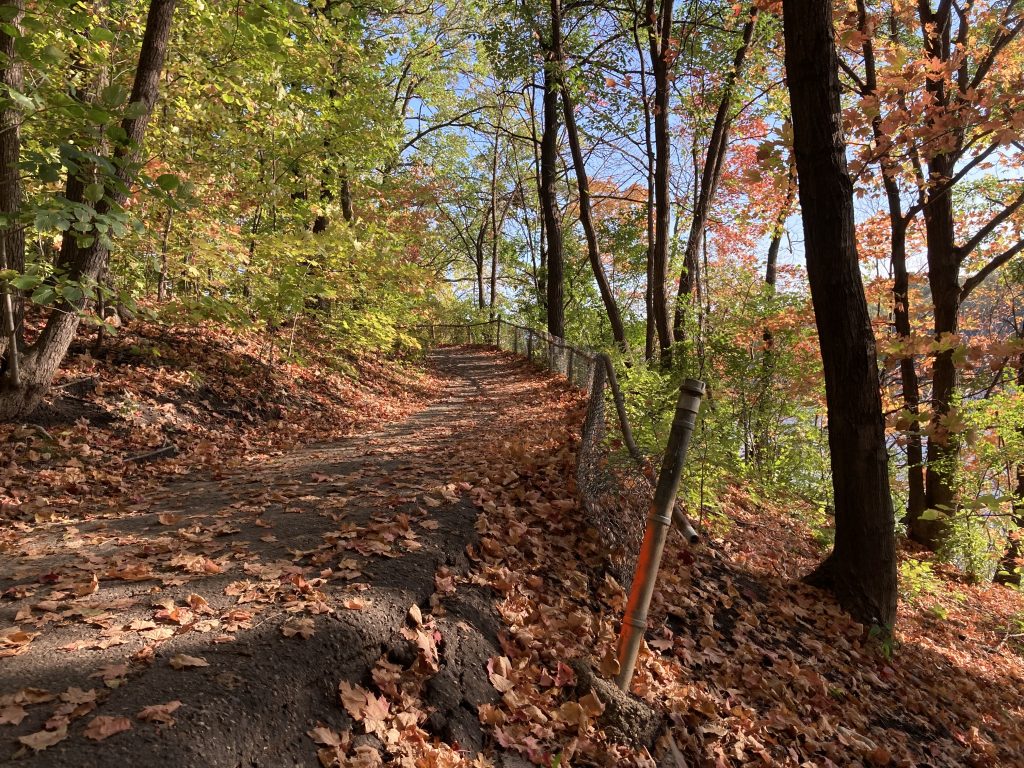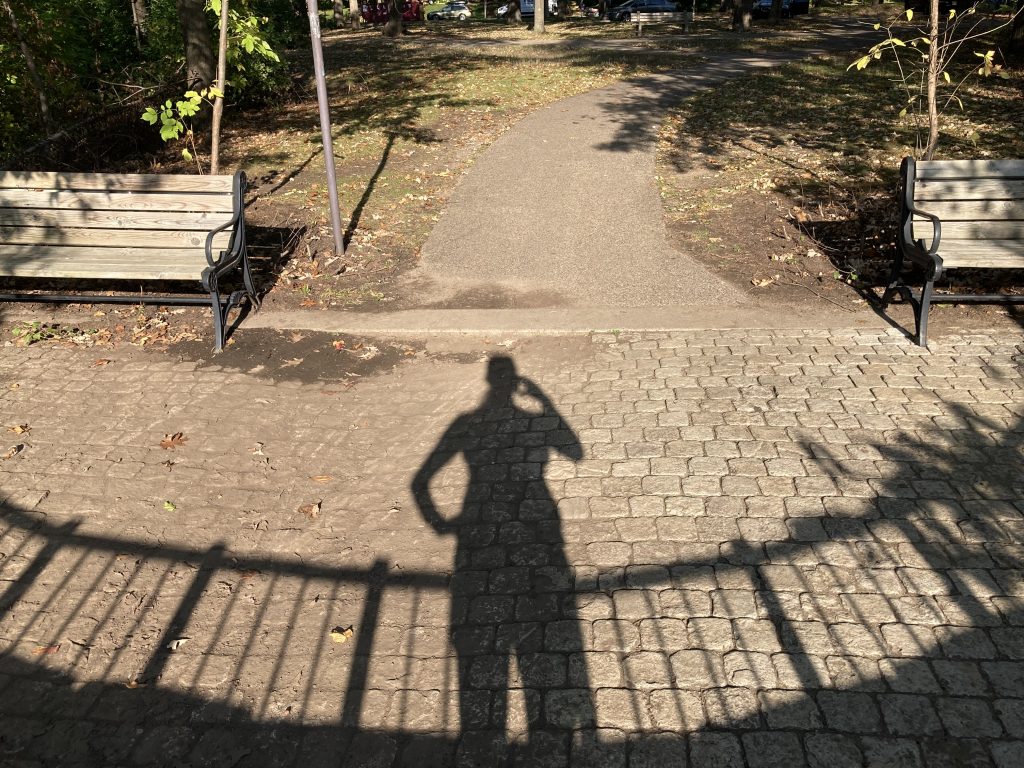4 miles
river road, north/south
25 degrees
Oh, I love running in weather like it was this morning! Sunny, calm, crisp air. So many shadows, some sharp some soft. Sparkling, shimmering, simmering river. Today my legs didn’t feel heavy and my calf was quiet, or maybe it was humming happily? My IT band didn’t hurt either! No compression sleeve while I ran, just after, for recovery.
I felt good. When I reached 2 miles I stopped, spoke a few notes into my phone, put on Beyoncé’s Renaissance and ran south.
10 Things
- shadows of the fence railing above the ravine, 1: 3 slightly crooked lines on the path, very solid and sturdy and thick
- fence railing, 2: the 3 lines became straight and crisp, seeming more real than the actual fence railing to my eyes
- shadow, 3: another solid sharp thick line from a tree’s branch
- shadow, 4: a soft, almost fluffy, form made from a cluster of small branches
- shadow, 5: a flash of dark overhead — a big bird in flight?
- shadow, 6: not a flash, but a flutter or flurry of movement — a few darting birds?
- a small white dot in the sky — was it a plane? the moon? I tried to find it in my peripheral vision but couldn’t
- something dark and plastic looking down below on the winchell trail — a sleeping person?
- young voices rising up from longfellow flats
- hopefully mis-overheard — one older woman to another: I farted and then the diaper filled with blood — what?
As I was admiring the fence railing shadows I thought about how clear and real they seemed to me. Much more there than the actual fence railing, which was staticky and vague.
At some point in the run, I had an idea for the triptych poem I was working on earlier this morning: intentionally do not mention the type of bird I’m writing about. It’s all about these different ways that I see birds through my peripheral — swishing wings, a call/cry/sound?, a sense of feathers and a shadow. Yes!
This weekend, I need to finish the wonderful book I’m listening to before it gets automatically returned to the library: The Ten Thousand Doors of January. I’m thinking about doors a lot lately. Wrote this before breakfast:
an open
door says
come in and
a shut
door says who
are you
but a door
opening
does not speak,
it sings.
Does it work? Not sure. And here’s a wonderful poem by W.S. Merwin:
Door/ W.S. Merwin
This is a place where a door might be
here where I am standing
In the light outside all the walls
there would be a shadow here
all day long
and a door into it
where now there is me
and somebody would come and knock
on this air
long after I have gone
and there in front of me
a life would open

